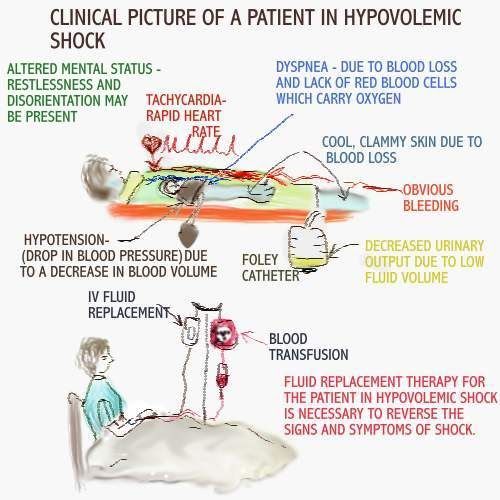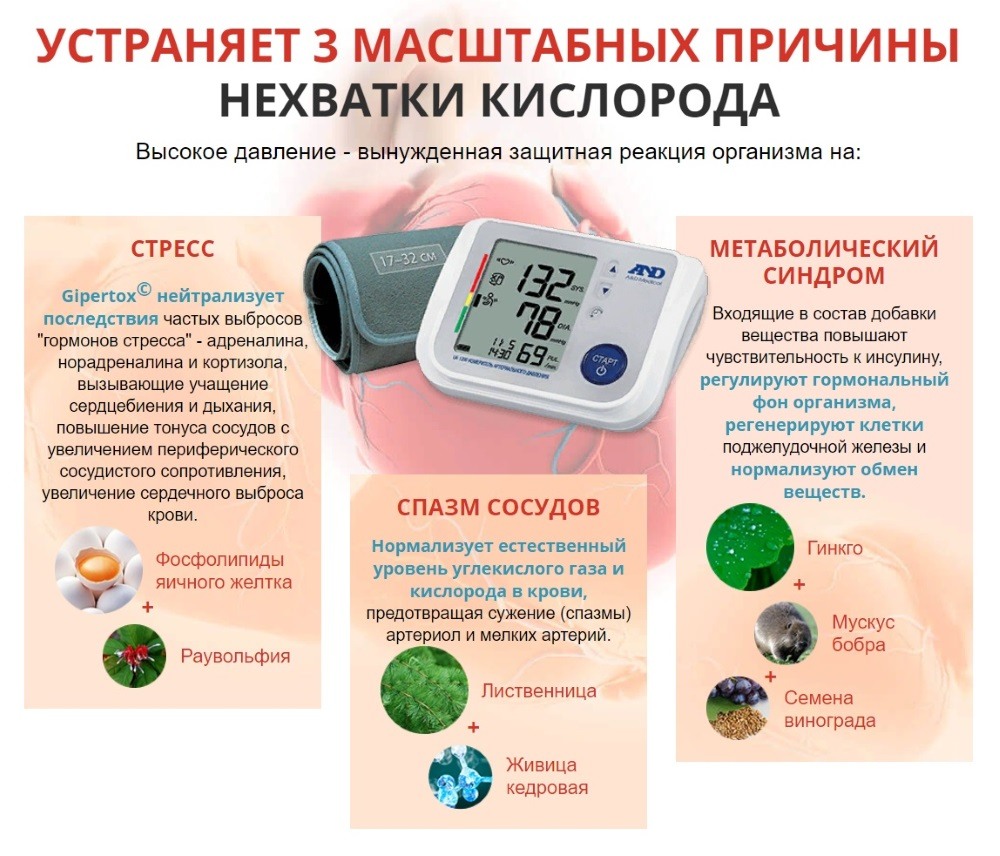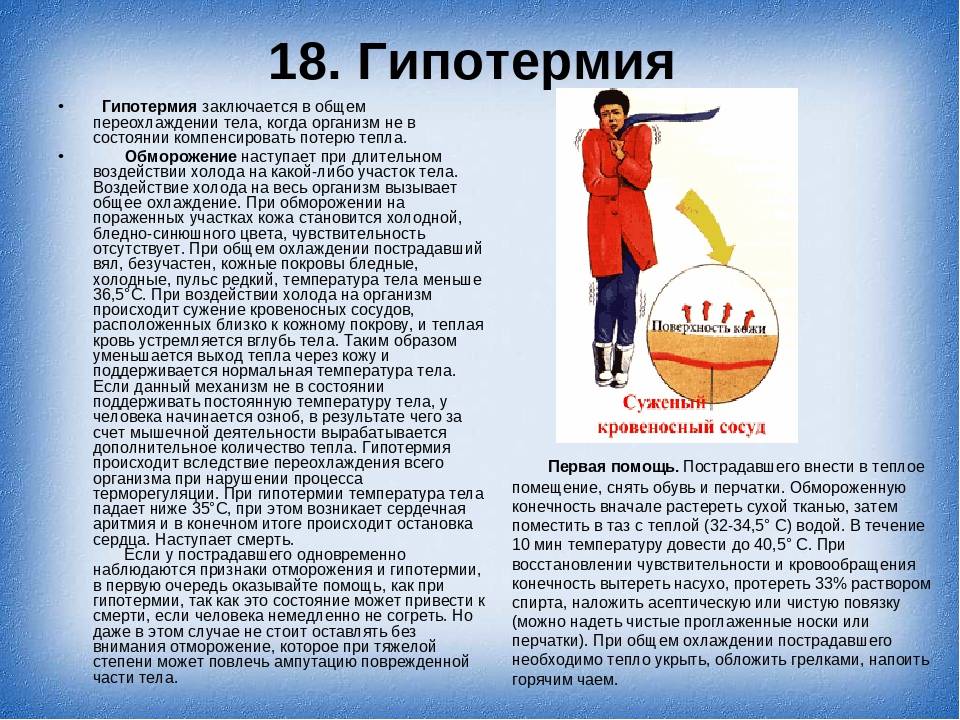Hypothermia and Blood Pressure: What Is Hypothermia? Symptoms, Signs, Treatment Protocol & Causes
What is hypothermia? Discover the symptoms, signs, treatment protocol, and causes of this dangerous medical condition. Learn the stages of hypothermia and how to provide first aid and clinical treatment.
Understanding Hypothermia
Hypothermia is a condition involving a dangerously low body temperature, usually below 95°F (35°C). It occurs when a person experiences prolonged exposure to cold temperatures, causing the body to lose more heat than it can generate. This can lead to multiple organ dysfunction and, if left untreated, can be life-threatening.
Symptoms of Hypothermia
The symptoms of hypothermia can vary depending on the stage of the condition. The stages range from mild to severe, and even the mild stage is considered a medical emergency.
Mild Hypothermia
Symptoms of mild hypothermia include:
– Body temperature of 90-95°F (32-35°C)
– Tiredness
– Shivering
– Hunger
– Nausea
– Dry and pale skin
– Fast heart rate
– Increased muscle tone
– Decline in memory, judgment, and thinking ability
– Unclear speech
– Loss of control of body movements
– Frequent urination

Moderate Hypothermia
Symptoms of moderate hypothermia include:
– Body temperature of 82-90°F (28-32°C)
– Continued decline in thinking ability
– Lethargy
– Enlarged and less responsive pupils
– Low blood pressure
– Low heart rate
– Low breathing rate
– Paradoxical undressing (removal of clothing)
Severe Hypothermia
Symptoms of severe hypothermia include:
– Body temperature of less than 82°F (28°C)
– Continued decline in blood flow to the brain, leading to unresponsiveness
– Continued decline in blood pressure, heart rate, and heart output
– Increased susceptibility to abnormal heart rhythms
– Congestion in lungs
– Production of a very small amount of urine
– Loss of reflexes
– Ultimately, failure of heart and lung function
First Aid for Hypothermia
If someone is experiencing symptoms of hypothermia, immediate medical attention is required. Until help arrives, the following first aid measures can be taken:
– Move the person to a warm, dry place, if possible, or shelter them from the elements
– Remove any wet clothing
– Cover the person with an electric blanket, if available, or dry layers of towels, clothing, or blankets
– Make skin-to-skin contact with another individual
– Have the person drink a warm beverage, excluding alcohol, if they are not unconscious
– Avoid moving or jostling the person, as this can trigger a fatal heart rhythm abnormality

Clinical Treatment for Hypothermia
Clinical treatment for hypothermia may include:
– Passive external rewarming: Removing the person’s wet clothing and covering them with layers of insulation
– Active external rewarming: Using methods such as water immersion or a heating unit to transfer heat through convection
– Active core rewarming: Irrigating body cavities with warm, intravenous fluids
– Other options like the use of warming that originates from the person’s core, such as heated blankets or warm air
Causes of Hypothermia
The underlying cause of hypothermia is prolonged exposure to cold temperatures. However, there are other factors and conditions that can increase the risk of developing hypothermia, including:
– Extremes in age (young children and the elderly)
– Certain health conditions, such as malnutrition
– Alcohol or drug intoxication
– Poor circulation
– Certain medications that can impair the body’s ability to regulate temperature
Preventing Hypothermia
To prevent hypothermia, it’s important to dress appropriately for cold weather, stay dry, and limit exposure to the elements. Additionally, individuals at higher risk, such as the elderly or those with certain medical conditions, should take extra precautions to stay warm and avoid prolonged exposure to cold temperatures.
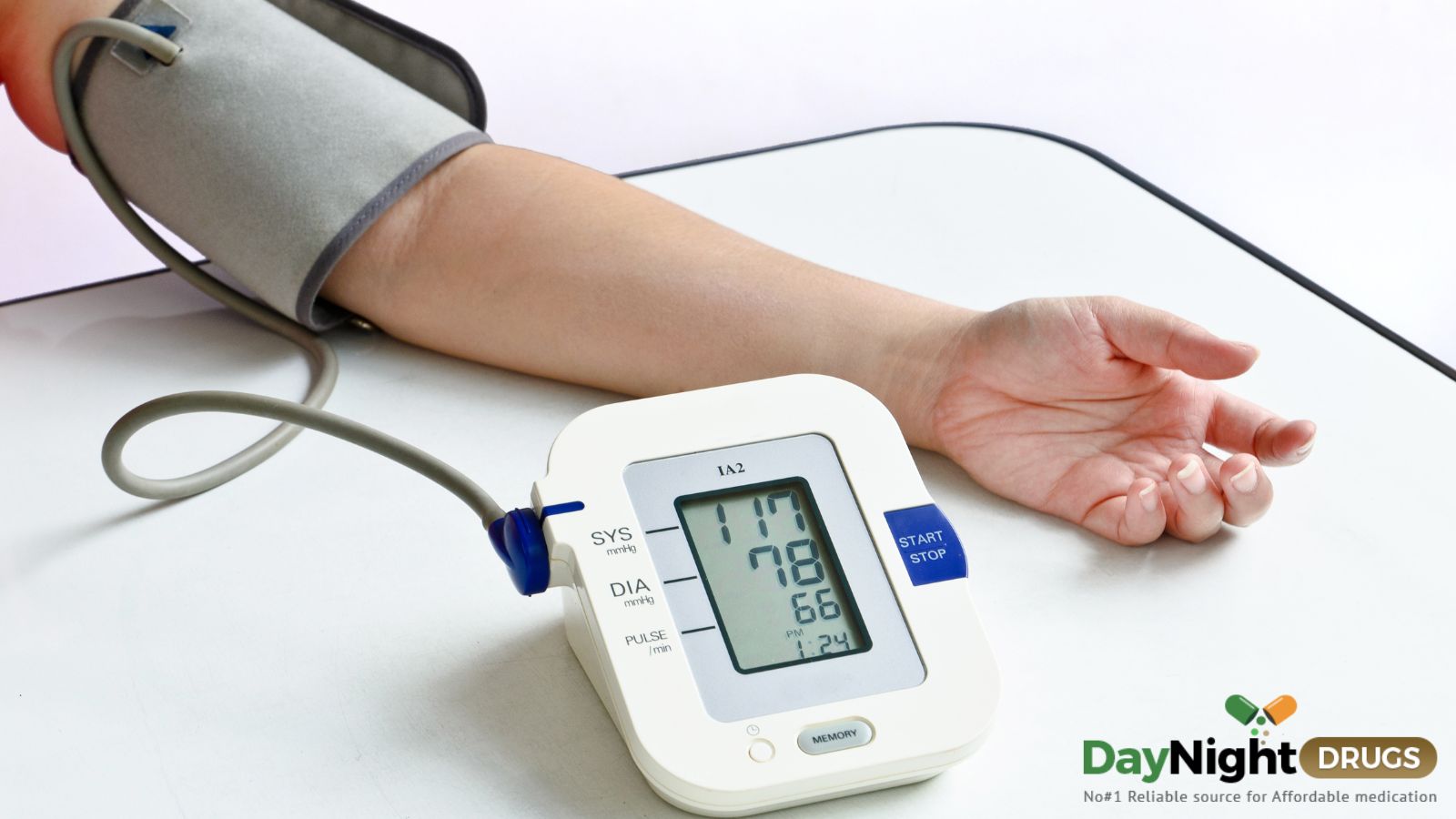
Key Takeaways
Hypothermia is a dangerous medical condition that requires immediate attention. It is characterized by a dangerously low body temperature, usually below 95°F (35°C). The symptoms range from mild to severe, and even the mild stage is considered a medical emergency. First aid and clinical treatment are essential to preventing further complications and potential loss of life. Understanding the causes and prevention of hypothermia can help individuals stay safe in cold weather conditions.
Symptoms, treatment, stages, and more
Hypothermia is a condition involving a low body temperature, usually below 95°F (35°C). Shivering, pale skin, unclear speech, and a fast heart rate can be signs of hypothermia. It is a medical emergency.
The stages of hypothermia range from mild to severe. Even the mild stage is an emergency, and a bystander should call 911 if they notice its signs. While waiting on help to arrive, first aid treatment entails getting the individual to a warm, dry place and removing any wet clothing.
The underlying cause of hypothermia is prolonged exposure to cold. That said, other factors and conditions can increase the risk, including extremes in age and certain health conditions, such as malnutrition.
Keep reading to learn more about the treatment, symptoms, prevention, diagnosis, and causes of hypothermia.
Hypothermia is an abnormally low body temperature of below 95°F (35°C). This happens when a person experiences cold temperatures for a prolonged period.
While normal metabolic processes in the body generate heat, wintry weather can cause the body to lose more heat than it generates. When this occurs, the core temperature drops.
A structure in the brain called the hypothalamus regulates body temperature. Findings show that when someone is exposed to cold, the hypothalamus raises body temperature through measures such as increasing muscle tone and shivering.
However, if exposure to cold continues, it will eventually overwhelm the body, and shivering will stop. At this point, multiple organs may stop functioning, which ultimately leads to death. This is why hypothermia is an extremely dangerous condition.
Symptoms in babies differ from symptoms in adults, note the Centers for Disease Control and Prevention (CDC). Babies may have very low energy and bright red, cold skin.
As hypothermia progresses through the stages, symptoms become more severe and dangerous. A 2021 review article describes the symptoms in adults as follows:
Mild hypothermia
Share on PinterestInfographic by Yaja Mulcare.
Symptoms in this stage include:
- body temperature of 90–95°F (32–35°C)
- tiredness
- shivering
- hunger
- nausea
- skin that is dry and paler than usual
- fast heart rate
- increased muscle tone
- increased blood pressure
- decline in memory, judgment, and thinking ability
- unclear speech
- loss of control of body movements
- frequent urination
Moderate hypothermia
Share on PinterestInfographic by Yaja Mulcare
Typically, shivering stops between 86–90°F (30–32°C). Other symptoms of moderate hypothermia include:
- body temperature of 82–90°F (28–32°C)
- continued decline in thinking ability
- lethargy
- enlarged and less responsive pupils
- low blood pressure
- slow heart rate
- slow breathing rate
- paradoxical undressing, or removal of clothes
- increased susceptibility to abnormal heart rhythms
Severe hypothermia
Share on PinterestInfographic by Yaja Mulcare
Symptoms of this stage include:
- body temperature of less than 82°F (28°C)
- continued decline in blood flow to the brain, leading to unresponsiveness
- continued decline in blood pressure, heart rate, and heart output
- increased susceptibility to abnormal heart rhythms
- congestion in lungs
- production of a very small amount of urine
- loss of reflexes
- ultimately, failure of heart and lung function
Treatment depends on the degree of hypothermia, but the aim is to make the person warmer.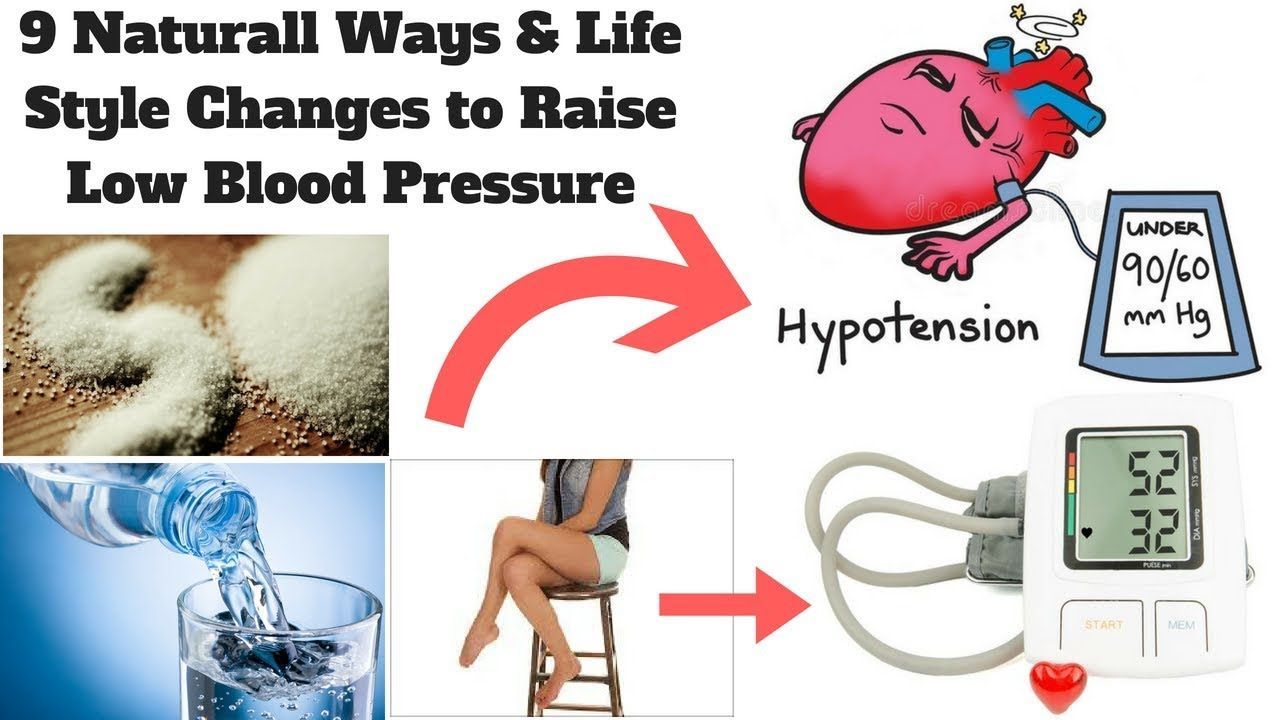 It involves first aid and clinical treatment.
It involves first aid and clinical treatment.
First aid
Anyone with symptoms of hypothermia needs immediate medical attention. Until help arrives, the CDC recommends:
- moving the person to a warm, dry place, if possible, or sheltering them from the elements
- taking off any wet clothing
- covering the person with an electric blanket, if available, or dry layers of towels, clothing, or blankets
- making skin-to-skin contact with another individual
- having the person drink a warm beverage, excluding alcohol, if they are not unconscious
- avoiding moving or jostling the person, as doing so can trigger a fatal heart rhythm abnormality
If someone has severe hypothermia, they may be unconscious. They may also appear not to have a pulse or be breathing. If this occurs, a bystander should perform CPR and continue it until help arrives. Sometimes people with hypothermia who appear to be dead can resuscitate.
Clinical treatment
Research states that clinical treatment may include the following options:
- Passive external rewarming: This entails removing the person’s wet clothing and covering them with layers of insulation.

- Active external rewarming: This involves methods such as water immersion and using a heating unit to transfer heat through convection. However, water immersion poses the danger of triggering collapse of the heart and blood vessels.
- Active core rewarming: This involves irrigating body cavities with warm, intravenous fluids. Other options include the use of warming that originates from outside the body, such as hemodialysis, which is filtering of the blood with a machine that acts as an artificial kidney.
A 2018 study provides the following prevention recommendations:
- Check the weather forecast before going outdoors, and dress appropriately.
- Avoid drinking alcoholic and caffeinated beverages, as they increase heat loss.
- Wear multiple layers of clothing, including a hat, scarf, and gloves.
- Set the home thermostat to 68°F (20°C) or higher, and dress warmly.
- Keep space heaters, which are an acceptable indoor heat source, away from flammable objects and ensure smoke and carbon monoxide detectors work.

- Place rolled towels underneath home doors to prevent drafts.
- Check on elderly neighbors, and make sure they have enough heat and food.
- Dress babies warmly, and limit their exposure to cold temperatures.
In winter, unexpected events can occur that pose a danger of hypothermia, such as home power outages and running out of gas while driving. To offset the risk of these events, experts recommend keeping winter survival kits at home and in the car.
Certain medications, specifically psychiatric medications, may increase a person’s risk of hypothermia. An individual may consider asking their doctor or pharmacist whether their medication could increase their risk of hypothermia.
Home survival kits may include:
- extra food and water
- an emergency heating source
- a fire extinguisher and smoke detector
Car survival kits may include:
- sleeping bags and blankets
- high calorie, nonperishable food
- extra clothing to keep dry
- water container
- waterproof matches
When doctors examine a person, the key symptoms and signs below indicate a diagnosis of hypothermia:
- body temperature below 95°F (35°C)
- shivering
- impaired mental state
- frostbite, which is injury to body tissues resulting from freezing
Other telltale symptoms inlude:
- frequent urination
- fast heart rate, fast breathing, and high blood pressure in mild hypothermia
- slow heart rate, slow breathing, and low blood pressure in moderate hypothermia
- a long pause in breathing or coma in severe hypothermia
Evidence shows that the diagnostic process should also include blood tests to measure:
- blood sugar
- electrolytes, such as sodium and potassium
- substances that show kidney function
Doctors may order an electrocardiogram (ECG) to assess heart function. They may also use imaging tests, such as X-rays, to assess the effects of a stroke or trauma that led to prolonged exposure to cold. Additionally, a doctor may use other lab studies and tests to detect potential complications and underlying causes of hypothermia.
They may also use imaging tests, such as X-rays, to assess the effects of a stroke or trauma that led to prolonged exposure to cold. Additionally, a doctor may use other lab studies and tests to detect potential complications and underlying causes of hypothermia.
Exposure to cold temperatures or falling into cold water can cause hypothermia.
The CDC notes that temperatures do not have to be excessively cold for hypothermia to develop. If the air temperature is 40°F (4.4°C) and someone is wet, they can develop hypothermia.
Certain factors or conditions can make an individual more susceptible to hypothermia. These include:
- extremes of age
- low blood sugar
- malnutrition
- skin disorders, such as burns and psoriasis
- stroke
- endocrine disorders, such as hypothyroidism and adrenal insufficiency, which are conditions affecting parts of the body that produce hormones
- substance use disorder
- neurodegenerative disorders, such as dementia
- dilated blood vessels due to conditions such as spinal cord injuries
- sepsis, which is an extreme response to infection
Doctors diagnose hypothermia if a person’s body temperature falls below 95°F (35°C). Shivering, impaired thinking ability, and frostbite are also key indications of the condition.
Shivering, impaired thinking ability, and frostbite are also key indications of the condition.
When spending time in cold environments, someone may not have access to a thermometer to take their temperature. With this in mind, it helps to be familiar with the symptoms of hypothermia. Even mild symptoms indicate the need for immediate medical attention.
Employing prevention measures, such as checking the weather forecast before going out, can reduce the likelihood of hypothermia. Keeping a winter survival kit in the home and the car could enable people to survive prolonged exposure to cold.
Symptoms, treatment, stages, and more
Hypothermia is a condition involving a low body temperature, usually below 95°F (35°C). Shivering, pale skin, unclear speech, and a fast heart rate can be signs of hypothermia. It is a medical emergency.
The stages of hypothermia range from mild to severe. Even the mild stage is an emergency, and a bystander should call 911 if they notice its signs. While waiting on help to arrive, first aid treatment entails getting the individual to a warm, dry place and removing any wet clothing.
While waiting on help to arrive, first aid treatment entails getting the individual to a warm, dry place and removing any wet clothing.
The underlying cause of hypothermia is prolonged exposure to cold. That said, other factors and conditions can increase the risk, including extremes in age and certain health conditions, such as malnutrition.
Keep reading to learn more about the treatment, symptoms, prevention, diagnosis, and causes of hypothermia.
Hypothermia is an abnormally low body temperature of below 95°F (35°C). This happens when a person experiences cold temperatures for a prolonged period.
While normal metabolic processes in the body generate heat, wintry weather can cause the body to lose more heat than it generates. When this occurs, the core temperature drops.
A structure in the brain called the hypothalamus regulates body temperature. Findings show that when someone is exposed to cold, the hypothalamus raises body temperature through measures such as increasing muscle tone and shivering.
However, if exposure to cold continues, it will eventually overwhelm the body, and shivering will stop. At this point, multiple organs may stop functioning, which ultimately leads to death. This is why hypothermia is an extremely dangerous condition.
Symptoms in babies differ from symptoms in adults, note the Centers for Disease Control and Prevention (CDC). Babies may have very low energy and bright red, cold skin.
As hypothermia progresses through the stages, symptoms become more severe and dangerous. A 2021 review article describes the symptoms in adults as follows:
Mild hypothermia
Share on PinterestInfographic by Yaja Mulcare.
Symptoms in this stage include:
- body temperature of 90–95°F (32–35°C)
- tiredness
- shivering
- hunger
- nausea
- skin that is dry and paler than usual
- fast heart rate
- increased muscle tone
- increased blood pressure
- decline in memory, judgment, and thinking ability
- unclear speech
- loss of control of body movements
- frequent urination
Moderate hypothermia
Share on PinterestInfographic by Yaja Mulcare
Typically, shivering stops between 86–90°F (30–32°C)./hypothermia-symptoms2-5ad4bb0fc6733500379fc89b.png) Other symptoms of moderate hypothermia include:
Other symptoms of moderate hypothermia include:
- body temperature of 82–90°F (28–32°C)
- continued decline in thinking ability
- lethargy
- enlarged and less responsive pupils
- low blood pressure
- slow heart rate
- slow breathing rate
- paradoxical undressing, or removal of clothes
- increased susceptibility to abnormal heart rhythms
Severe hypothermia
Share on PinterestInfographic by Yaja Mulcare
Symptoms of this stage include:
- body temperature of less than 82°F (28°C)
- continued decline in blood flow to the brain, leading to unresponsiveness
- continued decline in blood pressure, heart rate, and heart output
- increased susceptibility to abnormal heart rhythms
- congestion in lungs
- production of a very small amount of urine
- loss of reflexes
- ultimately, failure of heart and lung function
Treatment depends on the degree of hypothermia, but the aim is to make the person warmer. It involves first aid and clinical treatment.
It involves first aid and clinical treatment.
First aid
Anyone with symptoms of hypothermia needs immediate medical attention. Until help arrives, the CDC recommends:
- moving the person to a warm, dry place, if possible, or sheltering them from the elements
- taking off any wet clothing
- covering the person with an electric blanket, if available, or dry layers of towels, clothing, or blankets
- making skin-to-skin contact with another individual
- having the person drink a warm beverage, excluding alcohol, if they are not unconscious
- avoiding moving or jostling the person, as doing so can trigger a fatal heart rhythm abnormality
If someone has severe hypothermia, they may be unconscious. They may also appear not to have a pulse or be breathing. If this occurs, a bystander should perform CPR and continue it until help arrives. Sometimes people with hypothermia who appear to be dead can resuscitate.
Clinical treatment
Research states that clinical treatment may include the following options:
- Passive external rewarming: This entails removing the person’s wet clothing and covering them with layers of insulation.

- Active external rewarming: This involves methods such as water immersion and using a heating unit to transfer heat through convection. However, water immersion poses the danger of triggering collapse of the heart and blood vessels.
- Active core rewarming: This involves irrigating body cavities with warm, intravenous fluids. Other options include the use of warming that originates from outside the body, such as hemodialysis, which is filtering of the blood with a machine that acts as an artificial kidney.
A 2018 study provides the following prevention recommendations:
- Check the weather forecast before going outdoors, and dress appropriately.
- Avoid drinking alcoholic and caffeinated beverages, as they increase heat loss.
- Wear multiple layers of clothing, including a hat, scarf, and gloves.
- Set the home thermostat to 68°F (20°C) or higher, and dress warmly.
- Keep space heaters, which are an acceptable indoor heat source, away from flammable objects and ensure smoke and carbon monoxide detectors work.

- Place rolled towels underneath home doors to prevent drafts.
- Check on elderly neighbors, and make sure they have enough heat and food.
- Dress babies warmly, and limit their exposure to cold temperatures.
In winter, unexpected events can occur that pose a danger of hypothermia, such as home power outages and running out of gas while driving. To offset the risk of these events, experts recommend keeping winter survival kits at home and in the car.
Certain medications, specifically psychiatric medications, may increase a person’s risk of hypothermia. An individual may consider asking their doctor or pharmacist whether their medication could increase their risk of hypothermia.
Home survival kits may include:
- extra food and water
- an emergency heating source
- a fire extinguisher and smoke detector
Car survival kits may include:
- sleeping bags and blankets
- high calorie, nonperishable food
- extra clothing to keep dry
- water container
- waterproof matches
When doctors examine a person, the key symptoms and signs below indicate a diagnosis of hypothermia:
- body temperature below 95°F (35°C)
- shivering
- impaired mental state
- frostbite, which is injury to body tissues resulting from freezing
Other telltale symptoms inlude:
- frequent urination
- fast heart rate, fast breathing, and high blood pressure in mild hypothermia
- slow heart rate, slow breathing, and low blood pressure in moderate hypothermia
- a long pause in breathing or coma in severe hypothermia
Evidence shows that the diagnostic process should also include blood tests to measure:
- blood sugar
- electrolytes, such as sodium and potassium
- substances that show kidney function
Doctors may order an electrocardiogram (ECG) to assess heart function. They may also use imaging tests, such as X-rays, to assess the effects of a stroke or trauma that led to prolonged exposure to cold. Additionally, a doctor may use other lab studies and tests to detect potential complications and underlying causes of hypothermia.
They may also use imaging tests, such as X-rays, to assess the effects of a stroke or trauma that led to prolonged exposure to cold. Additionally, a doctor may use other lab studies and tests to detect potential complications and underlying causes of hypothermia.
Exposure to cold temperatures or falling into cold water can cause hypothermia.
The CDC notes that temperatures do not have to be excessively cold for hypothermia to develop. If the air temperature is 40°F (4.4°C) and someone is wet, they can develop hypothermia.
Certain factors or conditions can make an individual more susceptible to hypothermia. These include:
- extremes of age
- low blood sugar
- malnutrition
- skin disorders, such as burns and psoriasis
- stroke
- endocrine disorders, such as hypothyroidism and adrenal insufficiency, which are conditions affecting parts of the body that produce hormones
- substance use disorder
- neurodegenerative disorders, such as dementia
- dilated blood vessels due to conditions such as spinal cord injuries
- sepsis, which is an extreme response to infection
Doctors diagnose hypothermia if a person’s body temperature falls below 95°F (35°C).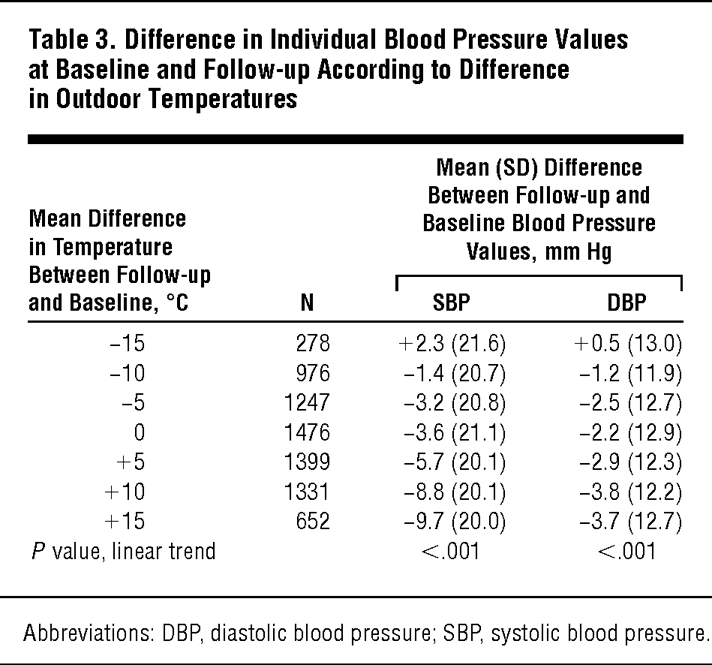 Shivering, impaired thinking ability, and frostbite are also key indications of the condition.
Shivering, impaired thinking ability, and frostbite are also key indications of the condition.
When spending time in cold environments, someone may not have access to a thermometer to take their temperature. With this in mind, it helps to be familiar with the symptoms of hypothermia. Even mild symptoms indicate the need for immediate medical attention.
Employing prevention measures, such as checking the weather forecast before going out, can reduce the likelihood of hypothermia. Keeping a winter survival kit in the home and the car could enable people to survive prolonged exposure to cold.
Rules of conduct for general hypothermia – Press Center
First, let’s look at the types of negative effects of low temperatures on humans.
General hypothermia (hypothermia) – a state of the body in which the temperature of the internal organs drops below +35 0 C.
slowly. At the same time, when moisture, low temperatures and wind are simultaneously exposed, the process of hypothermia of the body is carried out much faster.
At the same time, when moisture, low temperatures and wind are simultaneously exposed, the process of hypothermia of the body is carried out much faster.
Three stages of body hypothermia :
Mild – develops when body temperature drops to 35-33°C. It is characterized by general fatigue, weakness, drowsiness. The movements are constrained, speech is slow, the pulse is rare – 60-66 per minute, blood pressure is increased (up to 140/100 mm Hg). Thirst, chills. The skin is pale, marbled, the appearance of “goose bumps”.
Moderate – develops when body temperature drops to 32-29°C. Movements in the joints are sharply constrained, breathing is rare, heart contractions become less frequent, the pulse is weak, blood pressure is reduced. Pale, cold skin.
Severe – develops when body temperature drops below 29°C. Constricted pupils, weak reaction to light, may be completely absent. Sometimes there are cramps of the limbs, stiffness. Chewing muscles, abdominal muscles are tense. The skin is pale, cold to the touch. Breathing is rare, shallow, intermittent. The pulse is rare, weak filling (34-30 per 1 min), blood pressure is reduced or not detected. Body temperature up to 25-22 C leads to the death of the victim.
Sometimes there are cramps of the limbs, stiffness. Chewing muscles, abdominal muscles are tense. The skin is pale, cold to the touch. Breathing is rare, shallow, intermittent. The pulse is rare, weak filling (34-30 per 1 min), blood pressure is reduced or not detected. Body temperature up to 25-22 C leads to the death of the victim.
The prognosis for a severe degree of general cooling is determined by the presence of developed complications, therefore, with timely treatment, the patient’s condition has a potentially high reversibility /
First aid measures for general hypothermia and frostbite:
1. The injured person should not move vigorously and drink alcohol.
2. It is not recommended to massage, rub with snow, woolen cloth, warm baths, apply a heating pad, make warm compresses, lubricate the skin with oils or fats. (Rubbing with snow causes even more cooling, and ice crystals damage the skin, which can lead to infection)
3. It is necessary to quickly deliver the victim to a warm room, change into dry clothes, wrap in a blanket. Restoration of the temperature of chilled tissues in case of frostbite of the extremities should be carried out according to the principle of gradual rewarming “from inside to outside”.
It is necessary to quickly deliver the victim to a warm room, change into dry clothes, wrap in a blanket. Restoration of the temperature of chilled tissues in case of frostbite of the extremities should be carried out according to the principle of gradual rewarming “from inside to outside”.
4. An ambulance must be called.
5. If the victim is conscious: offer plenty of hot sweet drinks and hot food.
6. Carefully, so as not to injure the tissues again due to tearing off the frozen clothing from the skin of the victim, remove shoes and clothing from frostbitten limbs.
7. Mandatory observance of bed rest and elevated position of frostbitten limbs.
In the cold season there is a risk of hypothermia
The upcoming winter should not cause hypothermia and frostbite of the body. So that the rest in the cold does not end in failure, it is necessary to remember a number of rules for the prevention of cold injuries.
To begin with, let’s get acquainted with the types of negative effects of low temperatures on humans.
General hypothermia (hypothermia) is a state of the body in which the temperature of the internal organs drops below +350 C.
It is worth noting that if the human body is protected by insulated clothing or a mass of snow, then hypothermia in the open air comes slowly. At the same time, when moisture, low temperatures and wind are simultaneously exposed, the process of hypothermia of the body is carried out much faster.
Three stages of hypothermia of the body:
Mild – develops when body temperature drops to 35-33°C. It is characterized by general fatigue, weakness, drowsiness. The movements are constrained, speech is slow, the pulse is rare – 60-66 per minute, blood pressure is increased (up to 140/100 mm Hg). Thirst, chills. The skin is pale, marbled, the appearance of “goose bumps”.
Moderate severity – develops with a decrease in body temperature to 32-29 ° C. Movements in the joints are sharply constrained, breathing is rare, heart contractions become less frequent, the pulse is weak, blood pressure is reduced. Pale, cold skin.
Movements in the joints are sharply constrained, breathing is rare, heart contractions become less frequent, the pulse is weak, blood pressure is reduced. Pale, cold skin.
Severe – develops when body temperature drops below 29 ° C. Constricted pupils, weak reaction to light, may be completely absent. Sometimes there are cramps of the limbs, stiffness. Chewing muscles, abdominal muscles are tense. The skin is pale, cold to the touch. Breathing is rare, shallow, intermittent. The pulse is rare, weak filling (34-30 per 1 min), blood pressure is reduced or not detected. Body temperature up to 25-22 C leads to the death of the victim.
The prognosis for a severe degree of general cooling is determined by the presence of developed complications, therefore, with timely treatment, the patient’s condition has a potentially high reversibility.
In addition to hypothermia, there is a more complex effect of cold temperatures on the human body – frostbite.
Frostbite is a local tissue damage as a result of exposure to low temperatures, characterized by the possibility of developing necrosis of deep layers of the skin and deeper structures.
Frostbite development factors:
1. Meteorological – high humidity, wind.
2. Mechanical circulatory disorders – tight shoes, clothes, prolonged stay in an uncomfortable position, etc.
3. Diseases – impaired blood supply, conduction of nerve impulses, previous frostbite.
4. Decreased overall body resistance – fatigue, injuries, blood loss, recent infectious diseases, etc.
5. Conditions leading to the loss of adequate protection from the effects of cold – alcohol (up to 80% of frostbite) and drug intoxication, traumatic brain injury, stroke, epilepsy, cardiovascular diseases and others.
PREVENTION OF COLD INJURIES
When going out, check the weather forecast ahead of time so you can dress appropriately for the temperature.
Do not drink alcohol and psychoactive substances – alcohol intoxication (however, like any other) causes the illusion of warmth, and leads to hypothermia. An additional factor is the lack of concentration on signs of frostbite.
An additional factor is the lack of concentration on signs of frostbite.
It is obligatory to eat before going out into the cold.
Do not smoke in the cold – smoking reduces peripheral blood circulation, and thus makes the limbs more vulnerable.
Loose clothing promotes normal blood circulation, also for keeping warm, several layers of warm dry clothes are best.
Outerwear must be waterproof.
It is important that the shoes are not tight; warm insoles are needed inside the boots or boots. Wear wool instead of cotton socks.
Do not go out into the cold without mittens, a hat and a scarf. The best option is mittens made of water-repellent and windproof fabric with fur inside. Gloves made of natural materials, although comfortable, do not save from frost. Cheeks and chin can be protected with a scarf. In windy cold weather, before going outside, lubricate exposed areas of the body with cream.
Do not wear metal (including gold, silver) jewelry – rings, earrings, etc.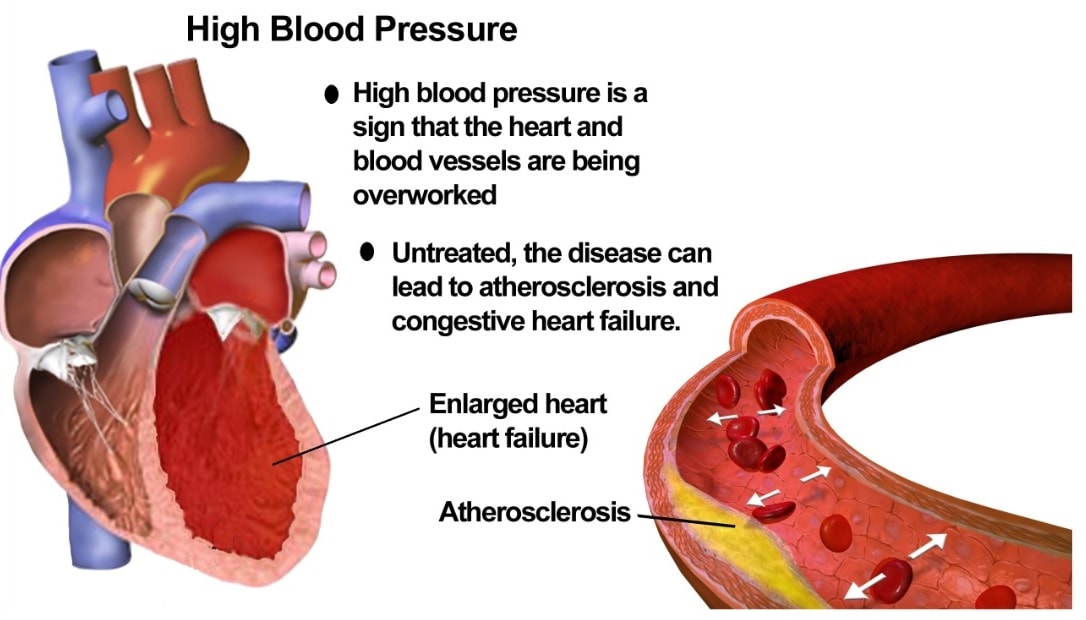 in the cold. First, the metal, due to its high thermal conductivity, cools down much faster than the body, as a result of which it can “stick” to the skin or oral mucosa with pain and cold injuries. Secondly, the rings on the fingers impede the normal circulation of blood. In severe frost, skin contact with metal should be avoided.
in the cold. First, the metal, due to its high thermal conductivity, cools down much faster than the body, as a result of which it can “stick” to the skin or oral mucosa with pain and cold injuries. Secondly, the rings on the fingers impede the normal circulation of blood. In severe frost, skin contact with metal should be avoided.
Do not wet your skin – water conducts heat much better than air. Don’t go out into the cold with wet hair after a shower.
Do not let the frostbitten area freeze again – this will cause much more significant damage to the skin.
Do not remove shoes from frostbitten limbs in the cold – in case of swelling, you will not be able to put on shoes again. It is necessary to reach a warm room as soon as possible. If your hands are cold, try warming them under your armpits or in your groin.
If the car breaks down far from the settlement or in an area unfamiliar to you, it is better to stay in the car, call for help on a mobile phone or wait for another vehicle to pass on the road.
In the prevention of frostbite, among other measures, the knowledge of the first symptoms plays – chilliness, tingling, numbness to loss of sensitivity, blanching, coldness of the skin, limitation in movement of the limbs!
As soon as on a walk you feel hypothermia or signs of frostbite of the limbs, you need to go to any warm place as soon as possible – a store, a cafe, an entrance, a car – to warm up and inspect potentially vulnerable places.
When you return home after a long walk in the cold, be sure to check for frostbite on the limbs, back, ears, nose, etc. Freezing frostbite can lead to gangrene and subsequent loss of a limb.
It should be borne in mind that in children the thermoregulation of the body is not yet fully formed, in the elderly and in some diseases this function is impaired. When letting a child go for a walk in the cold on the street, remember that it is advisable for him to return to warmth and warm up every 15-20 minutes.
Pets are also prone to frostbite.
First aid measures for general hypothermia and frostbite:
1. The injured person should not move vigorously and drink alcohol.
2. It is not recommended to carry out massage, rubbing with snow, woolen cloth, warm baths, apply a heating pad, make warm compresses, lubricate the skin with oils or fats. (Rubbing with snow causes even more cooling, and ice crystals damage the skin, which can lead to infection)
3. It is necessary to quickly deliver the victim to a warm room, change into dry clothes, wrap in a blanket. Restoration of the temperature of chilled tissues in case of frostbite of the extremities should be carried out according to the principle of gradual rewarming “from inside to outside”.
4. It is necessary to call an ambulance.
5. If the victim is conscious: offer a plentiful hot sweet drink and hot food.
6. Carefully, so as not to injure the tissues again due to tearing off the frozen clothes from the skin of the victim, remove shoes and clothes from frostbitten limbs.